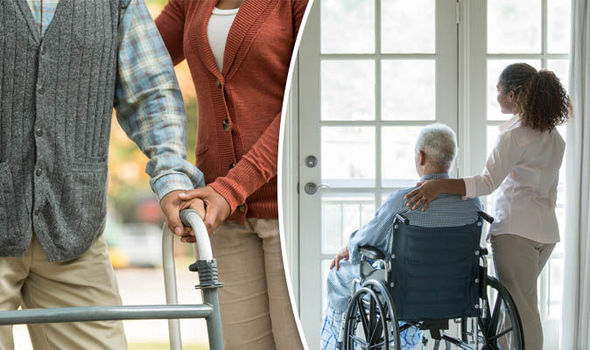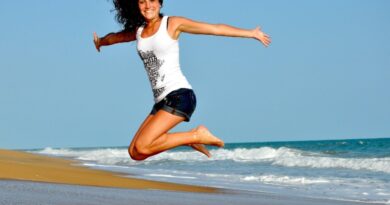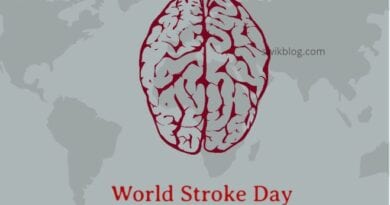Physical disabilities in the elderly are a significant and complex issue affecting millions of seniors worldwide. As the population continues to age, it becomes increasingly important to understand and address these disabilities to improve the quality of life for older adults.
In this blog post, we will delve into the various physical disabilities commonly encountered in the elderly population, their causes, and strategies for managing and mitigating their impact.
Understanding physical disabilities in the elderly
Physical disabilities in the elderly encompass a wide range of conditions that affect an individual’s ability to perform everyday tasks, maintain independence, and engage in social activities. These disabilities can manifest due to various factors, including age-related changes, chronic health conditions, injuries, and genetic predispositions.
Common physical disabilities in the elderly
Arthritis
Arthritis is prevalent among the elderly, characterized by joint inflammation and pain. Osteoarthritis and rheumatoid arthritis are the two most common forms. This disability can severely limit mobility and affect an individual’s ability to perform activities such as walking, climbing stairs, and grasping objects.
Osteoporosis
With age, bones tend to weaken and lose density, resulting in osteoporosis. This condition makes bones fragile and prone to fractures, often leading to a loss of height and mobility restrictions.
Fractures
Seniors are more susceptible to fractures, particularly hip fractures, which can seriously affect mobility and independence. Falls are a primary cause of fractures in the elderly.
Stroke
Strokes can result in paralysis or weakness on one side of the body, making it difficult for individuals to move, maintain balance, or perform daily activities without assistance.
Parkinson’s disease
Parkinson’s disease is a progressive neurodegenerative disorder that affects movement and coordination. It can lead to tremors, stiffness, and difficulty with balance and walking.
Cognitive impairment
Conditions like Alzheimer’s disease and other forms of dementia not only affect cognitive functions but also lead to physical disabilities as individuals struggle with coordination, mobility, and self-care.
Hearing loss
Age-related hearing loss, known as presbycusis, can isolate seniors by impairing communication and making it challenging to engage in social activities.
Vision impairment
Age-related eye conditions like macular degeneration and cataracts can result in significant vision loss, further limiting mobility and independence.
Diabetes complications
Diabetes-related complications such as neuropathy and vascular issues can lead to lower limb amputations and mobility problems.
Chronic pain
Conditions like chronic back pain, fibromyalgia, or osteoarthritis can cause persistent discomfort, reducing physical activity and overall quality of life.
Causes of physical disabilities in the elderly
Physical disabilities in the elderly are often the result of a combination of factors, including:
- Age-related changes – As the body ages, muscle mass decreases, bones weaken, and joints become less flexible, making individuals more prone to injuries and physical limitations.
- Chronic health conditions – Conditions such as diabetes, heart disease, and hypertension can contribute to physical disabilities if not managed effectively.
- Injuries – Falls and accidents can result in fractures, head injuries, and other physical disabilities, particularly in older adults with compromised bone density and balance.
- Genetics – Some individuals may have a genetic predisposition to certain conditions that can lead to physical disabilities, such as osteoarthritis or hereditary neuropathies.
- Lifestyle factors – Poor nutrition, lack of exercise, and smoking can exacerbate age-related physical changes and increase the risk of disability.
Managing and mitigating physical disabilities in the elderly
While physical disabilities in the elderly are often associated with challenges, there are numerous strategies and interventions available to help manage and mitigate their impact:
1. Early detection and diagnosis
Timely diagnosis of chronic conditions and early intervention can significantly improve outcomes. Regular health check-ups and screenings are crucial for identifying and addressing physical disabilities before they become severe.
2. Rehabilitation and physical therapy
Physical therapy and rehabilitation programs can help seniors regain or maintain their mobility and independence. These programs are tailored to address specific disabilities and improve strength, flexibility, and balance.
3. Assistive devices and technology
Assistive devices, like canes, walkers, wheelchairs, and hearing aids, support seniors with mobility and sensory challenges. Technology, such as voice-activated assistants and smartphone apps, also helps. For better home accessibility in Cheyenne, Wyoming, consider small home elevators. They enhance mobility and independence, making daily life safer and easier for older adults.
4. Medication management
For individuals with chronic conditions like arthritis or diabetes, proper medication management and adherence are essential to control symptoms and prevent disability progression.
5. Fall prevention
Falls are a leading cause of physical disabilities in the elderly. Home modifications, such as installing handrails and removing trip hazards, along with strength and balance exercises, can reduce the risk of falls.
6. Nutrition and exercise
A well-balanced diet and regular physical activity are crucial for maintaining overall health and preventing disability. Exercise programs tailored to individual abilities can help improve muscle strength, joint flexibility, and cardiovascular health.
7. Social support and mental health care
Maintaining social connections and mental well-being is vital for seniors with physical disabilities. Support groups, counseling, and community engagement can help combat feelings of isolation and depression.
8. Accessibility and inclusion
Communities and public spaces need to be designed with accessibility in mind. Ensuring that sidewalks, buildings, and transportation options are wheelchair-friendly and accommodating to those with mobility challenges is essential for promoting inclusivity.
9. Caregiver support
Family caregivers play a critical role in the lives of seniors with physical disabilities. Providing caregivers with resources, respite care, and training can help them better support their loved ones.
Conclusion
Physical disabilities in the elderly are a multifaceted issue that requires a comprehensive approach to address effectively. By understanding the common disabilities, and their causes, and implementing appropriate strategies for management and mitigation, we can improve the quality of life for seniors and promote healthy aging. It is essential to foster a society that values and supports older adults, ensuring they can live their lives with dignity and independence despite physical challenges.









I started Sinimet for my Parkinson’s disease but the disease became resistant. So i started on Ayurvedic treatment from Natural Herbs Centre (naturalherbscentre. com), I had a total decline in symptoms after the 6 months treatment. This treatment is a breakthrough